It was recently announced that Marseille, France’s second city, will host the 13th edition of Manifesta, the European Biennial of Contemporary Art, in 2020, following Zurich this year and Palermo in 2018. This will be the first edition of the biennial in France. An initial press conference is likely to take place this month, with further details to be disclosed in the autumn. The teams at Manifesta and in Marseille are now busy appointing pilot committees to build the project in creative and practical terms.
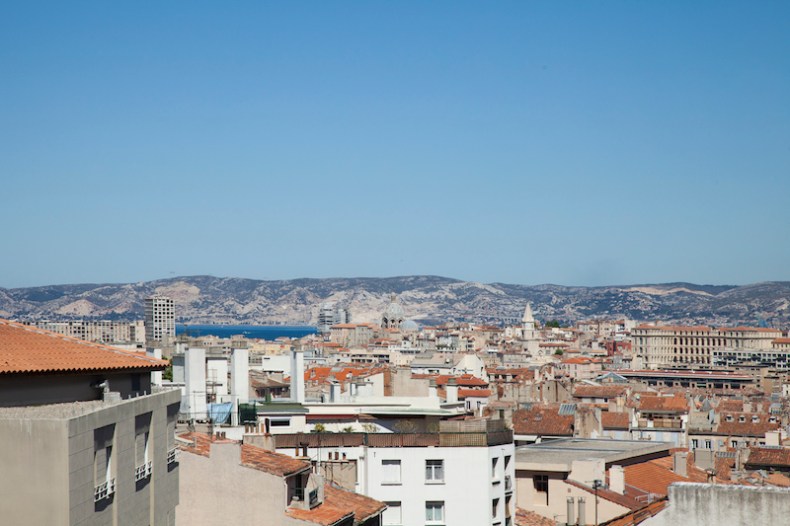
© 2016, Philippe Munda
Marseille is not the Côte d’Azur and for a long time it did not try terribly hard to attract tourism – in fact, quite the opposite. The city has a rough edge that the media exploits; they frequently choose to ignore the more pleasurable and constructive aspects of life there. The 1980s and 1990s were dynamic decades in terms of museum funding and commissioning – periods when Bernard Blistène, now director of the MNAM/Centre Pompidou, was in charge of the city’s museums, and when the highly respected dealer Roger Pailhas operated there. Public subsidy then began to dwindle but the cultural sector has continued to develop in more diverse, independent ways.
The City of Marseille appointed collector and philanthropist Marie-Hélène Féraud to a newly created position as the municipal councillor for contemporary art a little over two years ago. Manifesta is the culmination of these two years; with countless local, national and international colleagues, she has rallied enthusiasm and tirelessly campaigned for this exciting opportunity. The city itself is contributing €2.4 million to the development of Manifesta over the next four years.
In 2013, the Southern French metropolis of Marseille and the Provence region were nominated as European Capital of Culture, which enabled great infrastructural improvements and led to increased tourism. New museums opened such as the acclaimed MuCEM (Museum of European and Mediterranean Civilisations), designed by French architect Rudy Ricciotti, and the FRAC (Fonds Régional d’Art Contemporain) by Japanese architect Kengo Kuma. Both of these buildings have transformed parts of the neglected port, which now have expanded walkways and commercial offerings beyond the picturesque Old Port. Not all of Marseille’s cultural assets benefitted, however – some smaller venues had to close, such as the galerie of Marseille and bureau des competences. The Museum of Contemporary Art (MAC) is in dire need of funding and attention, despite its fantastic collections.
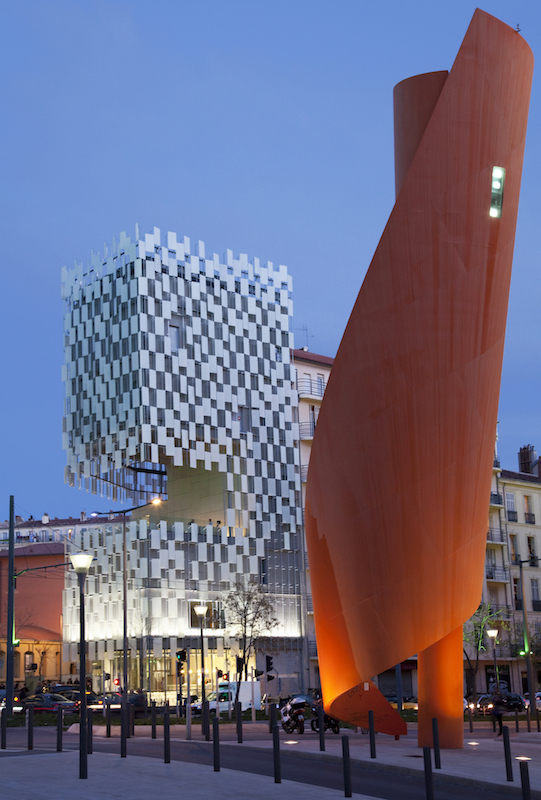
FRAC, Marseille. © J.C. Lett
In recent years, Marseille’s cultural landscape has visibly changed, becoming more internationally ambitious. Two major annual visual arts events attract the art world: the PAC (Printemps de l’Art Contemporain), a city-wide springtime festival organised by Marseille Expos; and, in late August and early September, Art-O-Rama, an art fair staged at the huge ex-industrial multidisciplinary art-park, Friche la belle de mai. Out of this emerged another fair, Paréidolie, specialising in contemporary drawing, which also opens at the end of August. The FIDMarseille film festival and Actoral, a festival dedicated to performing arts, are major events that have also helped to establish Marseille as a global arts destination. In light of all this, it is not surprising that Marseille has been chosen to host Manifesta; it draws on the successes of an ambitious few years.
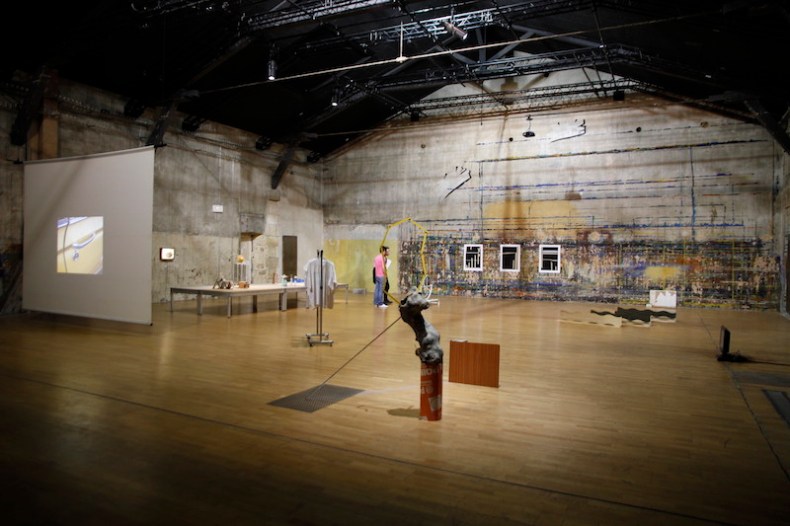
Installation view, ‘The Eighth Zone’ (29–31 May 2014), at Montevideo, Marseille. Photo: Clémence Marin; © Printemps de l’Art Contemporain 2014
Marseille is also full of artists who choose to work there in preference to Paris, Bordeaux or Lyon and, along with its many museums, also boasts some commercial galleries (such as Arnaud Deschin’s La GAD, Galerie Gourvennec Ogor, and Straat Galerie), as well as cutting-edge alternative spaces, and residency centres, including Rond Point Projects, Triangle, and La Compagnie. The city’s art school, with its impressive views over the bay, is where Anna Dezeuze now teaches. The network ‘Marseille Expos’ promotes the activities of its 35 members, which range from big museums to smaller organisations, by producing a quarterly contemporary art map and online programme. Local private collections, such as those owned by the Gensollens and the Férauds have also been developing steadily – the current exhibition ‘Les Possédés’ at Friche la belle de mai, curated by Sextant &+, borrows works from these important southern French collections (until 31 July). The powerful Mécènes du Sud group have, meanwhile, been nurturing the relationship between art and business by facilitating artists’ residences in local firms and co-funding new artworks.
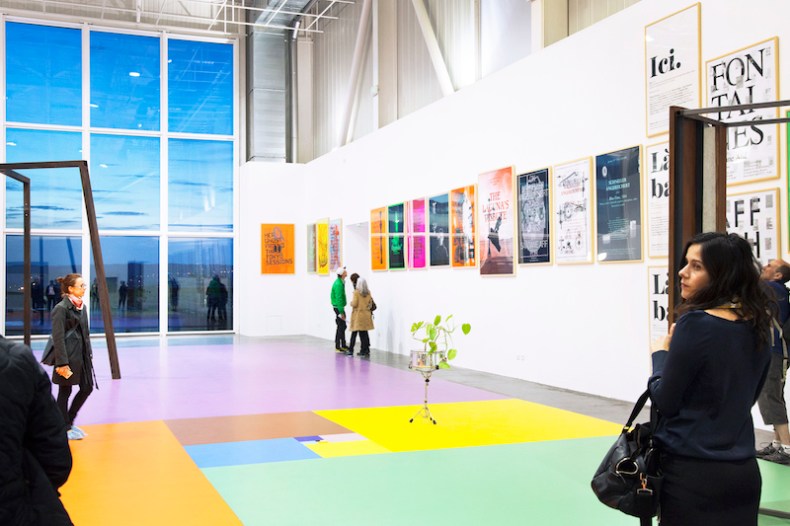
Installation view, ‘Les Possédés’, at Friche la Belle de Mai, Marseille. Photo: Philippe Munda; © Printemps de l’Art Contemporain 2016
Marseille’s rich heritage and its status as a truly multicultural city also offer fertile ground for future developments. Other cities in the South of France already boasting vibrant art scenes, such as Aix-en-Provence, Arles, Montpellier, and Nice, are nevertheless likely to benefit from the increasing attention Marseille is being shown.
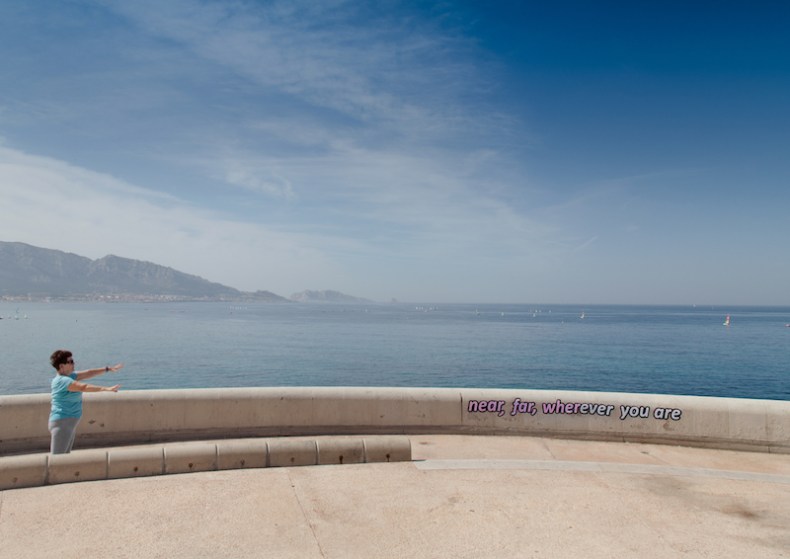
On dirait le sud, view of urban interventions, 2015, Anne-Sophie Turion. Commissioned by Astérides for the PAC 2015, Marseille. Photo: Gabriel Buret; © the artist
In 2015, I was fortunate to be invited as guest curator of the PAC. The urban myth that the picture postcard was invented in Marseille in 1891 became our starting point. Whatever the truth of that, Marseille is now a destination for cultural visitors and holidaymakers alike – and, in light of Manifesta, its ascent is set to rise. Wish you were here…

Why Manifesta makes sense in Marseille
On dirait le sud , view of urban interventions, 2015, Anne-Sophie Turion. Commissioned by Astérides for the PAC 2015, Marseille. Photo: Gabriel Buret; © the artist
Share
It was recently announced that Marseille, France’s second city, will host the 13th edition of Manifesta, the European Biennial of Contemporary Art, in 2020, following Zurich this year and Palermo in 2018. This will be the first edition of the biennial in France. An initial press conference is likely to take place this month, with further details to be disclosed in the autumn. The teams at Manifesta and in Marseille are now busy appointing pilot committees to build the project in creative and practical terms.
© 2016, Philippe Munda
Marseille is not the Côte d’Azur and for a long time it did not try terribly hard to attract tourism – in fact, quite the opposite. The city has a rough edge that the media exploits; they frequently choose to ignore the more pleasurable and constructive aspects of life there. The 1980s and 1990s were dynamic decades in terms of museum funding and commissioning – periods when Bernard Blistène, now director of the MNAM/Centre Pompidou, was in charge of the city’s museums, and when the highly respected dealer Roger Pailhas operated there. Public subsidy then began to dwindle but the cultural sector has continued to develop in more diverse, independent ways.
The City of Marseille appointed collector and philanthropist Marie-Hélène Féraud to a newly created position as the municipal councillor for contemporary art a little over two years ago. Manifesta is the culmination of these two years; with countless local, national and international colleagues, she has rallied enthusiasm and tirelessly campaigned for this exciting opportunity. The city itself is contributing €2.4 million to the development of Manifesta over the next four years.
In 2013, the Southern French metropolis of Marseille and the Provence region were nominated as European Capital of Culture, which enabled great infrastructural improvements and led to increased tourism. New museums opened such as the acclaimed MuCEM (Museum of European and Mediterranean Civilisations), designed by French architect Rudy Ricciotti, and the FRAC (Fonds Régional d’Art Contemporain) by Japanese architect Kengo Kuma. Both of these buildings have transformed parts of the neglected port, which now have expanded walkways and commercial offerings beyond the picturesque Old Port. Not all of Marseille’s cultural assets benefitted, however – some smaller venues had to close, such as the galerie of Marseille and bureau des competences. The Museum of Contemporary Art (MAC) is in dire need of funding and attention, despite its fantastic collections.
FRAC, Marseille. © J.C. Lett
In recent years, Marseille’s cultural landscape has visibly changed, becoming more internationally ambitious. Two major annual visual arts events attract the art world: the PAC (Printemps de l’Art Contemporain), a city-wide springtime festival organised by Marseille Expos; and, in late August and early September, Art-O-Rama, an art fair staged at the huge ex-industrial multidisciplinary art-park, Friche la belle de mai. Out of this emerged another fair, Paréidolie, specialising in contemporary drawing, which also opens at the end of August. The FIDMarseille film festival and Actoral, a festival dedicated to performing arts, are major events that have also helped to establish Marseille as a global arts destination. In light of all this, it is not surprising that Marseille has been chosen to host Manifesta; it draws on the successes of an ambitious few years.
Installation view, ‘The Eighth Zone’ (29–31 May 2014), at Montevideo, Marseille. Photo: Clémence Marin; © Printemps de l’Art Contemporain 2014
Marseille is also full of artists who choose to work there in preference to Paris, Bordeaux or Lyon and, along with its many museums, also boasts some commercial galleries (such as Arnaud Deschin’s La GAD, Galerie Gourvennec Ogor, and Straat Galerie), as well as cutting-edge alternative spaces, and residency centres, including Rond Point Projects, Triangle, and La Compagnie. The city’s art school, with its impressive views over the bay, is where Anna Dezeuze now teaches. The network ‘Marseille Expos’ promotes the activities of its 35 members, which range from big museums to smaller organisations, by producing a quarterly contemporary art map and online programme. Local private collections, such as those owned by the Gensollens and the Férauds have also been developing steadily – the current exhibition ‘Les Possédés’ at Friche la belle de mai, curated by Sextant &+, borrows works from these important southern French collections (until 31 July). The powerful Mécènes du Sud group have, meanwhile, been nurturing the relationship between art and business by facilitating artists’ residences in local firms and co-funding new artworks.
Installation view, ‘Les Possédés’, at Friche la Belle de Mai, Marseille. Photo: Philippe Munda; © Printemps de l’Art Contemporain 2016
Marseille’s rich heritage and its status as a truly multicultural city also offer fertile ground for future developments. Other cities in the South of France already boasting vibrant art scenes, such as Aix-en-Provence, Arles, Montpellier, and Nice, are nevertheless likely to benefit from the increasing attention Marseille is being shown.
On dirait le sud, view of urban interventions, 2015, Anne-Sophie Turion. Commissioned by Astérides for the PAC 2015, Marseille. Photo: Gabriel Buret; © the artist
In 2015, I was fortunate to be invited as guest curator of the PAC. The urban myth that the picture postcard was invented in Marseille in 1891 became our starting point. Whatever the truth of that, Marseille is now a destination for cultural visitors and holidaymakers alike – and, in light of Manifesta, its ascent is set to rise. Wish you were here…
Unlimited access from just $16 every 3 months
Subscribe to get unlimited and exclusive access to the top art stories, interviews and exhibition reviews.
Share
Recommended for you
Stedelijk Museum begins search for new contemporary art venue
Art News Daily : 25 May
York Floods: an update from the Jorvik Viking Centre
Museums and heritage sites across the UK are fighting to minimise flood damage this winter. But what happens after disaster strikes?
Would Brexit destabilise the art market?
Would a ‘leave’ vote spell disaster for the UK’s thriving art trade, or open up new opportunities to it? Two experts debate the question